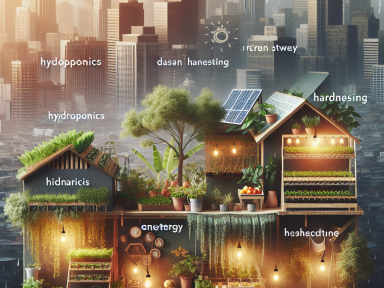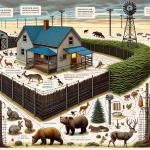The Importance of Self-Sufficiency in Urban Homesteading
The reliance on supermarkets, public utilities, and a ready supply of commodities has become so ingrained in modern living that simplicity, once a virtue, seems like an alien concept. But as we witness rising cases of natural disasters and global crises, the need to prepare ourselves for self-sufficiency is more important than ever.
Self-Sufficiency: A Definition
Simply put, self-sufficiency means creating a lifestyle that allows you to be independent, notably in terms of providing for your basic necessities such as food, water, and shelter. This involves understanding homesteading and survival strategies, especially when living in an urban environment.
Why is Self-Sufficiency in Urban Settings Important?
Natural disasters, pandemics, and economic instability can occur without warning. When such crises hit, urban areas often face the brunt due to high population density and the resultant chaos. In such situations, being able to provide for yourself without relying on external resources is not just beneficial—it’s pivotal.
Key Aspects of Urban Homesteading
Urban homesteading involves adapting traditional homesteading principles to city life. While the application may look different, the principles remain the same:
- Food Production: Cultivating your own food not only contributes to self-sufficiency but also improves one’s health. Small-scale gardening techniques, hydroponics, and vertical gardening are perfect for urban environments.
- Water Collection: With practices like rainwater harvesting, you can secure a sustainable water source, reducing your reliance on municipal supplies.
- Energy Generation: Harnessing renewable energy sources like solar power can provide a reliable power supply even when the grid fails.
Steps to Begin Your Journey towards Self-Sufficiency
Embarking on the pathway to self-sufficiency is not always easy. It may seem overwhelming given our deep-rooted reliance on urban living standards. Here’s a simple plan to start:
- Identify your Needs: Self-sufficiency doesn’t mean living in total isolation from society. Instead, identify what basic necessities you consume on a daily basis and find alternatives to produce them independently.
- Learn Basic Skills: Self-sufficiency requires some practical skills like basic gardening, home repairs, and food preservation techniques.
- Create a Sustainable Living Environment: This involves setting up a small garden, implementing rainwater collection, composting, and considering alternative energy sources.
The Fear Factor: A Timely Warning
No one enjoys contemplating disaster. But the reality is, events beyond our control can disrupt our lives. Rather than daily living in fear or denial, we can take action that not only prepares us but also enriches our lives right now. Far from being a negative force, fear can be the motivation that drives us to become self-sufficient.
The benefits of self-sufficiency touch every aspect of life—from healthier, organic meals to a deeper connection with the environment. So why wait till the alarm rings? Start your journey towards self-sufficiency today and create a more secure tomorrow!




GIPHY App Key not set. Please check settings